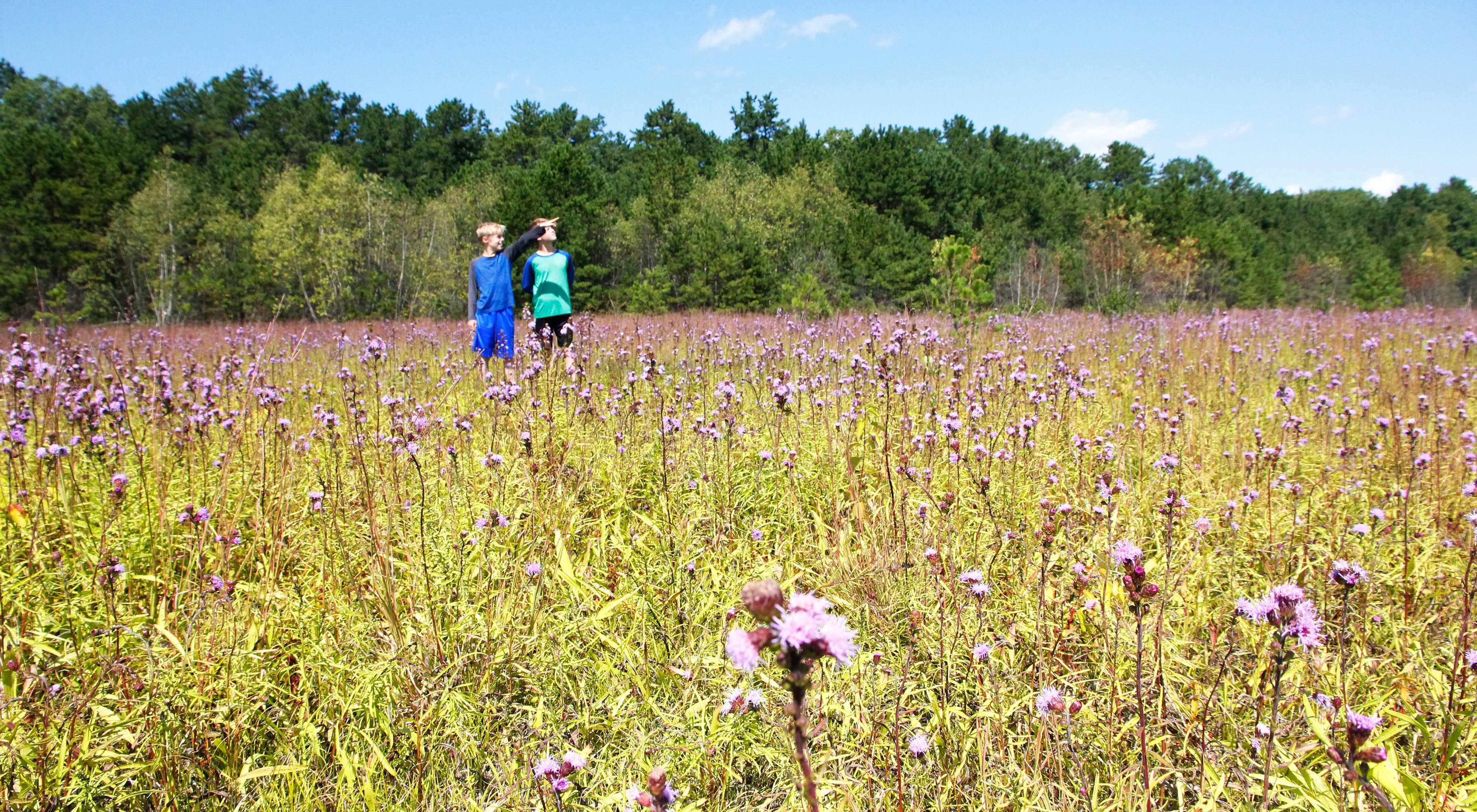Description
The grasslands are home to several species of birds that are rare or endangered in Maine, including grasshopper sparrows, upland sandpipers, vesper sparrows and horned larks. In late summer, the plains are painted purple by the spectacular blooms of the northern blazing star, which occurs nowhere else in Maine. The population of this plant at Kennebunk Plains is the largest in the world. Other common plants on the preserve include lowbush blueberries, poverty grass and little bluestem. One of only two known populations of black racer snakes in the state also makes the plains its home.
Kennebunk Plains is managed with controlled burns implemented by trained Conservancy and partner staff. The flora and fauna of the Kennebunk Plains is dominated by fire tolerant plant species that are well-adapted to the nutrient poor soils on site and that respond favorably to periodic fire. Burning maintains the grassland community necessary for nesting habitat for grassland birds. Grasslands and shrublands are ephemeral in the New England landscape, and without burning the grasslands will become invaded with pitch pine, gray birch, red oak, white pine, and pin cherry. Fire creates a change in vegetative structure and composition, creating new openings and initiating a nutrient release that increases food availability for many species. Carefully controlled fires are necessary for the health of the entire grassland ecosystem.
